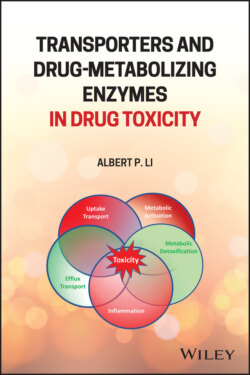Читать книгу Transporters and Drug-Metabolizing Enzymes in Drug Toxicity - Albert P. Li - Страница 91
3.12.1 Drug Metabolism and Toxicity
ОглавлениеAs one of the first drugs associated with liver failures, extensive research has been performed with troglitazone to elucidate the key events associated with its toxicity. Investigations with human liver microsomes, recombinant P450s, and human hepatocytes show that troglitazone is metabolized by P450, especially CYP3A4, to highly reactive o‐quinone methide and quinone epoxide metabolites that form conjugates with GSH and N‐acetylcysteine [216, 217]. Troglitazone is also found to be metabolized to glucuronide and sulfate conjugates [218]. In vitro studies with human hepatocytes suggest that the parent drug is responsible for the cytotoxicity of troglitazone, with conjugative pathways as detoxifying [219]. Reviews of troglitazone hepatotoxicity have suggested that reactive metabolite formation is not likely to be responsible for its hepatocellular cytotoxicity [220, 221]. Reactive metabolites and the associated oxidative stress [121, 222, 223] and cytotoxic inflammatory responses to metabolite‐protein conjugates are believed to be key events leading to hepatic failure [24, 224, 225].
